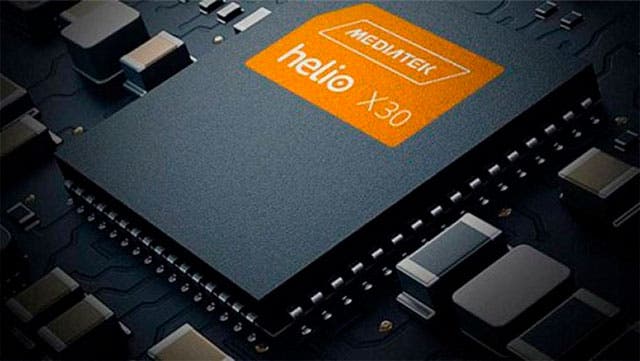Few years ago MediaTek reigned as one of best choices in chipsets for the mid-range segment. However this year the Taiwanese company isn’t experiencing good days with its market share decreasing due to the growing competition and the lack of interest on its chipsets.
Although the company has some good offerings like the Helio P25, it struggles in the entry and high level, being beaten by its major rival Qualcomm. Their current offering for entry level, the MT6737 can’t compete with Qualcomm’s offering, and its flagship chipset the Helio X30 isn’t doing well with probably less shipments than the Essential Phone.
Recent reports already confirmed that the company is taking a rest from the flagship SoCs production, to focus where they always did well the mid range segment. However, simply changing their philosophy isn’t enough to improve the results. The company has been plagued by seeing most of its potential costumers choosing Qualcomm’s offering, instead of their Helio P series.

In order to get its clients back the company is going aggressive. With all the scandals and investigations surrounding Qualcomm, most of them due to antitrust regulatory agency reports, and the recent rumors of Broadcom acquisition, MediaTek is trying to persuade Chinese smartphone vendors to adopt Helio P chipsets and cut any heavy reliance in Qualcomm.
The MediaTek’s strategy come after some reports coming from digitimes, that states the Chinese OEMs, producing mid and low entry devices, are watching closely the possible impact of Qualcomm’s business if the Broadcom recent unsolicited bid succeed in the future.
The Chinese smartphone vendors are reportedly adjusting their smartphone chipsets quotes down and adjusting order placement ratio. That put both MediaTek and Qualcomm as possible choices, what can give some extra force to the competition between the pair.
Moreover if Broadcom deal with Qualcomm succeeds, to meet the hike in ASPs, Broadcom would have to terminate Qualcomm’s budget and mid-range chipsets segment. Instead the company will put all the focus in the flagship segment, where the Snapdragon 800 series represents very well the company.
Those news are encouraging for Mediatek, that should be cheering for Broadcom acquisition success. With their main focus being now the mid range segment a Qualcomm’s departure from their most fierce fight, the budget wars, would give the Taiwanese company plenty of chances to regain its lost consumers and increase once again their market share.
Currently, all the possible effects of Broadcom’s bid over Qualcomm are just speculation, Qualcomm itself already refused the first bid. Although the deal could give more chances to MediaTek, the chipset manufactures should not retain its expectations on it. Firstly, the chipset manufacture should focus in what they did wrong this year, and then align their plans and philosophy, ir order to make their chipsets a most interesting choice for Smartphone Vendors on 2018.






Mediatek “flagship” chip sits next to Qualcomm “mid-range” …
As always…
I think that Helio x30 sits next to snap 820 and it is more than enough for average user. But its the other details that’s more significant like compatibility, price , legal issues , bands etc.
But overall I don’t want to see mediatek failing because competition is always good for consumers.
It’s has better GPU than S660 but it’s weaker on the CPU side.
well they need a better chip, better dev support, all LTE bands, less power consumption and mostly better PR
Well MTK never considered supporting open source regarding their SoC’s so people actually don’t want them & are ready to pay extra cuple bucks for QC with CAF as people actually do like costume solutions (some for functions other for updates and security other for bugs lazy incapable OEM’s never fix). Chinese don’t like neither MTK nor QC (nor do I) they want to develop their own ones (which US is trying to block every possible way with limited success) so when they do it will be a big blow (at first) for QC & instant game over for MTK (which MTK is well aware of).
X30 is not lost yet if they get prices down now their will be a uper mid range phones wave with them until S670 arrives next year (as it will be much better one). Good news is QC also won’t hurry S670 as it hurts their top series sale (S8xx).
QC also missed (on purpose) this year with S660 as the new phones which arrived this year with it are usually more expensive than the flagship’s…
It’s up to MTK to turn their failures to success (which so far they didn’t).
Mediatek should only blame itself for losing market shares and shouldn’t hope on someone’s else failure, but improve many aspects of their policies and offerings.
On the beginning of 2015, they had (for that time) two almost competitive SoCs, the Quad Core MT6732 and the Octa Core MT6752, but instead of improving their game and getting some advantage when Qualcomm was struggling with SD615 and SD810, they released two watered down versions of their chipsets, the useless MT6735 and the not so great MT6753, which a lot of b-companies still use today only “because it’s octacore, baby!”.
After losing that opportunity, they were pushed way back in the high mid-tier and in the flagship range, were they have never been a threat, and they were also kicked out from the entry level market, at least talking about relevant brands. Nowadays you can only find MTK chipsets in second-rate brands and in cheap models of meizu, vivo and xiaomi (less and less used, tho).
But the problem is not only the performance gap, but also the total lack of support to manufacturers onto developing their software, whose cannot properly tune the software to the deepest levels, and the situation is even worse for smaller company, which have to deal with that “mediatek stock” rom with very few tweaking possibilities, an outdated, poorly optimized software which makes their products all the same (aka on the crappy side), so having an MT6750 or a P25 looks almost the same due to this messy software development.